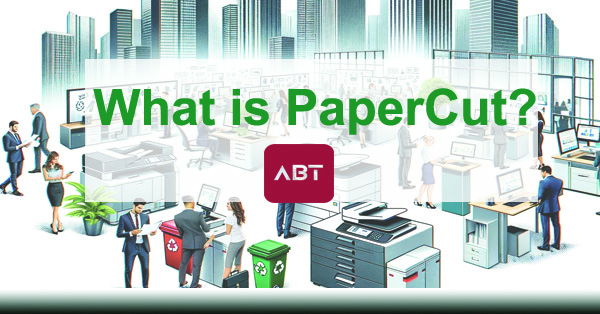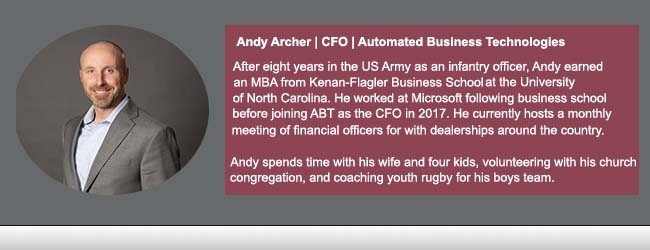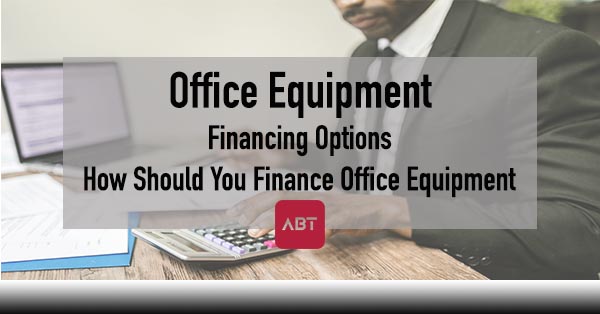Financing Options | How should you finance acquiring new equipment?
Most of our customers lease their office equipment, typically using a third party financial company. That doesn’t mean that leasing is the right way for you to finance your hardware, it just means that it is the most common. You can also pay with cash/check/credit card for the full amount up front or on terms, or finance with a traditional loan. Let me provide some things to consider when choosing which finance option to choose.
Leasing Your Office Equipment
One of the primary benefits to leasing is simplicity. Lease approval up to $250,000 is often done very quickly based on a credit check of the business. Businesses in our industry typically partner with multiple partners to provide leasing services, though it may not be clear at the outset that the lessor ultimately isn’t the hardware reseller / service provider.
An office equipment lease application requires the legal name of the entity, the address associated with the entity, and a phone number along with information on the amount and term of the lease. Some approvals take minutes to receive, with no financials nor bank statements required. The application will show as an inquiry on the credit report of the entity, but not impact personal credit unless a personal guaranty application is requested and provided. You also have a set monthly payment and you may not actually see the value of the lease to the seller.
The lease can be simple during the term of the lease, based on the terms of the lease. If the lease does not allow for escalations, the payment amount won’t change over time and you don’t think about principal and interest.
You probably don’t enter a lease intending to end it early, but there are times that you may need to end a lease early. Unlike traditional financing, there is no principal balance that can be paid off to avoid interest payments. If you want to close a lease early, you must pay the total of the remaining payments, plus an early termination fee (sometimes called a restocking fee).
On a fair market value lease, the lessor may not provide the opportunity to return the equipment early, but require you to not only pay the sum of the remaining payments, but also purchase the asset in order to close the lease.

Office Equipment Bundled Leasing
In a bundled lease, the monthly payment covers a set amount of use on the equipment for a service contract. There are contracts that will cover unlimited printing, but those are less common than agreements that cover a certain amount with overage billed on top of the monthly payment. Bundling your payment can simplify things for your billing department by consolidating both the lease for the equipment and service contract expense to the same invoice and vendor. There are also risks to this type lease.
Bundled lease terms do not typically indicate how much of the payment goes towards leasing the asset and how much goes towards the service of the asset. The lessor will pay the seller a lump sum based on how the seller directs the lessor to split the monthly payment. For example, a monthly payment of $200 may include $150 towards to the asset and $50 towards service. The lessor would then pay the seller and lump sum based on the $150 payment, not the full $200.
The $50 a month would be paid to the seller every month as those payments are made over the course of the lease to cover the service contract associated with the asset on lease. Because service contracts typically escalate, the lease terms will include escalation language allowing the payment to increase up to 20% annually. Because most leases do not designate how much of the payment is for service, the terms may allow for the entire payment to escalate, rather than just the portion for service.
Lease End Terms
Fair Market Value Leases
Most leases are typically fair market value (FMV) or $1 Out to the lessee. On the FMV lease, the lessor owns the equipment at the end of the lease and the lessee has an option to purchase for the “fair market value” of the equipment at the end of the lease or earlier in the case of an early buyout. The fair market value is not typically disclosed on the lease, and the seller can influence what is shown to the lessee due to the vendor agreement between the lessor and seller.
An FMV lease also will not automatically terminate, but require notice to terminate within a specified timeframe in order for the lease to not renew. Typically, notification is sixty day window between 180-90 days before lease maturation. Many leases will automatically renew for up to twelve additional months if notification is not received within that time. If you decide not to keep the equipment, you will be required to return the equipment to a designated location at your expense.
$1 Out Leases
On a $1 out lease, the lessee owns the equipment at lease maturity. This allows the lessee to utilize section 179 to accelerate deprecation of an asset on their taxes. It also eliminates the risk of the lease auto-renewing since the lessee owns the asset at the end of the lease. If you intend to keep the asset you are leasing for longer than the initial term of the lease, it is advantageous to do a $1 out lease. Depending on how you use the equipment you lease, you can get more life from the printer than 36-60 months. If you run the equipment hard and plan to replace it regularly, the FMV lease will be less expensive than a $1 out lease.

Purchase Upfront / Traditional Financing
You can also pay upfront for your printer. You can use cash / check / credit card to pay at once, or finance it through your own financial partner rather than relying on the sellers partners. Using your own financial partners gives you more control over the terms of the financing. You can get a fixed asset loan from your bank, which may take a little more time than a lease upfront, but reduces the risk of higher of predatory lease terms.
Traditional loan financing also provides greater flexibility if you need to pay the loan off early (depending on the terms of the loan). If you can pay of the loan with no early payment penalty, you can avoid interest and simply pay off the remaining principle. A traditional loan payment will likely be competitive with a $1 out lease payment, but a bit higher than an FMV monthly lease payment. You will also own the equipment at the end of term, eliminating the need to spend money shipping it back to wherever the lessor designates.
There is of course, multiple things to consider when selecting how to finance a copier / multi-function printer, or any other asset. If you want to preserve cash to invest in something with a higher return than the interest on your monthly payments, you may choose an option with the lowest monthly payment to maximize growth in whatever you are investing in.
If you intend to run the asset to the limits of it’s capacity and require frequent upgrades, you don’t want to own the equipment. If you plan to extend the life of the asset beyond the finance terms, you may want terms that result in ownership at the contracts maturity rather than a renewal of the contract. There isn’t one answer for that fits all scenarios.

